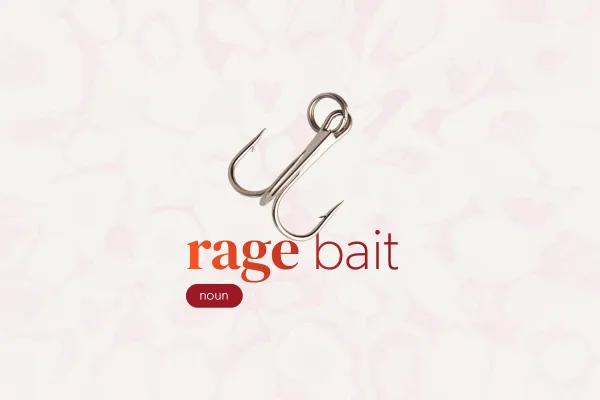How are new languages created? The linguistics of “The Iron Dreamers”, Part 4
Pidgins, creoles, and mixed languages

Most contact languages are not, like you might expect, just a mix of the 2+ languages that came together to form them.
Time and time again throughout history, groups of people without a common language have been thrown together and left floundering for a way to communicate. This can happen for a number of reasons: multilingual work environments, conquest, long-distance trade, plantation slavery, or other more mundane causes. And whenever people are tossed into the linguistic mix like this, new languages—called contact languages—have a tendency to form.
Today we’ll learn about the linguistics of contact languages and then use that knowledge to think about language in science communicator Ashley Christine’s (@ModernDayEratosthenes) debut sci-fi novel, The Iron Dreamers.
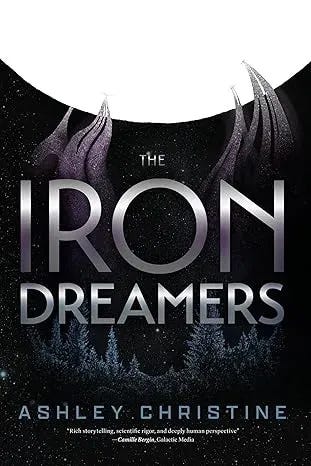
- Part 1: Why do languages change?
- Part 2: Are we stuck with the same grammar for life?
- Part 3: Are some languages more complex than others?
- Part 4: How are new languages created? (this article)
To briefly recap the premise of The Iron Dreamers, we learn early in the book that a portion of humanity has become immortal and fled to space, where they establish a colony of several hundred thousand people on a space station called Sol. However, these immortals have also become infertile, so no new children are born to this community. After a thousand years, the people are still speaking 21st-century English.
Why hasn’t English changed in all that time? One of the characters in the book explains:
“I thought language would have changed by now,” she says.
“It should have changed. If we lived and died as humans used to, then even English would have evolved to be unrecognizable to you. But everyone here was born in the twenty-first century[.] There’s been no reason for language to change.” (p. 193)
Over the course of this series, we’ve looked at increasingly more drastic kinds of language change—shifts in vocabulary, grammar alterations, simplification and complexification—and shown that each of these might be possible for the unique social situation on Sol. Now we come at last to the most extreme type of language change—creating an entirely new language.
What are mixed languages?
Under “normal” circumstances throughout history, whenever disparate groups of people who do not share a common language are thrown together, new languages—called contact languages—have formed. This often happened in the context of plantation slavery during the colonial era, where slaves from diverse linguistic backgrounds were forced together; but contact languages also frequently arise out of the need to communicate with trade partners (Parkvall 2019: 268–269), conquest, or other more mundane contexts like multilingual work environments. The social situation on Sol, an amalgamation of people from all over the Earth, is the perfect incubator for a new contact language.
However, most contact languages are not, like you might expect, just a mix of the 2+ languages that came together to form them. This does happen occasionally, and these particular types of contact languages are called, fittingly enough, mixed languages, but they are extremely rare. Mixed languages take part of their linguistic system from one source, and part from another. Here are a few examples of the ways that mixed languages partition their linguistic systems:
Table 1. Examples of mixed languages and what they mix
| Language | Location | Mixed Features |
|---|---|---|
| Media Lengua | Ecuador | The grammar is from Quechua, and the vocabulary is from Spanish. |
| Michif | Canadian Prairies | The nominal system is from French, and the verbal system is from Cree. |
| Mednyj Aleut | Mednyj Island, Russia | The vocabulary is from Aleut, while nouns follow Aleut grammar and verbs follow Russian grammar. |
| Sri Lankan Malay | Sri Lanka | The vocabulary is entirely Malay, but the grammar is a mix of Tamil and Sinhala. |
The difference between mixed languages and the other types of contact languages we’ll look at in a moment is that, while other contact languages arise from the need to communicate across groups of people with no common language, mixed languages typically arise in situations where a common language already exists, but the mixed language serves as a marker of ethnic identity (Velupillai 2015: 77). This could be a plausible trajectory for the citizens of Sol, but only if there were a critical mass of speakers of a language other than English. But in that case, I suspect those citizens would simply use that other language rather than mix it with English. The sociolinguistics of how mixed languages develop are quite complicated, however (Velupillai 2015: 77–84; Smith & Grant 2019), so I won’t speculate on that more here. The more common outcome in contact scenarios is the development of a jargon, pidgin, or creole. Let’s look at each in turn.
What are jargons?
Neither jargons nor pidgins are quite “languages” in the full sense of the word, because they cannot accommodate the full range of social needs of their speakers.
Jargons are the simplest type of contact language, consisting mainly of special technical vocabulary associated with specific areas of work or interest. They are often thought of as a “pre-pidgin” stage with a small vocabulary and no real grammatical structure (Parkvall 2019: 272; McWhorter 2019: 287). One better-known jargon is Bamboo English, a Japanese English-based jargon that developed after World War II that was spoken between American military personnel and Japanese citizens. Another is Mobilian Trade Jargon, developed as a lingua franca among Native American tribes of the U.S. Southeast. Jargons are highly context-dependent, so that it’s impossible to understand a sentence of jargon without knowing what was happening in the moment. Speakers aren’t really following grammatical rules as much as they’re throwing together whatever will be best understood in the moment by the parties present. Here’s an example from Liberian Jargon Dutch:
-
Liberian Jargon Dutch (1680s, in the region of modern Liberia)
- KönigKing
- PeterPeter
- mie1sg
- segesay
- ick1sg
- juw2sg
- segesay
- KönigKing
- PeterPeter
- segesay
- mi,1sg
- segesay
- KönigKing
- Peter,Peter
- Dassiegifts
- hebbe,have
- mi1sg
- segesay
- kikehave
- Dassie.gifts
‘King Peter tells me to ask you for the presents, let's see them.’
Parkvall (2019: 272)
If I hadn’t given you the translation, it’d be impossible to piece together what the speaker meant in that example based on the glosses alone. As a jargon, it lacks the systematicity and predictability necessary to convey a consistent meaning. For that, we turn to pidgins.
Linguistics uses a special format for presenting examples that allows anybody to read and understand the example, even if they don’t know the language. This format is called an interlinear gloss. The number of lines can vary, but they are usually something like the example below.
A list of glossing abbreviations can be found here.
| Line | Description |
|---|---|
| Central Alaskan Yup’ik (Inuit–Yupik–Unangan; Alaska) | A header with some language information, such as its family and where it is spoken |
| tuntussuqatarniksaitengqiggtuq | A transcription of the example in the language. |
| tuntu-ssur-qatar-ni-ksaite-ngqiggte-uq | A breakdown of the morphemes (meaningful parts like stems, prefixes, and suffixes) in each word. |
| reindeer-hunt-FUT-say-NEG-again-3SG:IND | The glosses (brief definitions) for each morpheme. Grammatical categories are glossed using Latinate technical terms and labeled in SMALL CAPS. The meanings of the abbreviations are usually provided in a footnote or table somewhere in the text. You can see the abbreviations used in Linguistic Discovery’s content here. |
| ‘He had not yet said again that he was going to hunt reindeer.’ | The translation for the example. |
| Payne (1997: 28) | The bibliographic source of the example. |
What are pidgins?
There has been extensive debate as to whether pidgins and creoles constitute distinct “types” of languages identifiable from their grammatical features alone, without needing to know the social histories that gave rise to them.
Pidgins, while lexically and structurally still quite restricted, have nonetheless developed a degree of stability and conventions by a community of speakers (Parkvall 2019: 262). They are native to no one and used for fairly limited communication (Matthews 2014: 304; Aikhenvald 2018: 324; Parkvall 2019: 262). But unlike jargons, it usually is possible to reconstruct the intended meaning of sentences in a pidgin. Here are two examples of pidgins at work:
-
Chinese Pidgin English (17th–19th-century China)
- sposeif
- my1sg
- all‑sameas
- you2sg
- sicksick
- my1sg
- mustmust
- wanteewant
- too‑mucha_lot
- chinchinworship
- thatthat
- largebig
- JossGod
‘If I were as sick as you are, I would certainly pay much reverence to the Supreme God.’
Parkvall (2019: 263)
-
Chinook Jargon (Pacific Northwest)
- naika1sg
- tikiwant
- xlwimadifferent
- pipapaper
‘I want a different newspaper.’
Parkvall (2019: 264)
Other pidgin languages include: Basque-Icelandic Pidgin, Algonquian-Basque Pidgin, Chinook Jargon, International Sign, Eskimo Trade Jargon, and Plains Indian Sign Language (described as a pidgin by Parkvall 2019: 271, although other descriptions give the impression it may be better described as a creole).
The term pidgin itself derives from the Chinese Pidgin English pronunciation of the English word business. The language was referred to as pidgin English, literally ‘business English’.
As mentioned earlier, contact languages other than mixed languages are not mere mixtures of elements from different languages. Both pidgins and creoles have features unique to them, which arise through negotiating the communicative needs of speakers who don’t share a common language. Different pidgins/creoles develop different linguistic conventions for overcoming these barriers; sometimes those conventions are modeled on the original languages of the speakers, but sometimes not. There has been extensive debate as to whether pidgins and creoles constitute distinct “types” of languages identifiable from their grammatical features alone, without needing to know the social histories that gave rise to them (DeGraff 2005; Bakker et al. 2011; McWhorter 2018). Nonetheless, there are certain features which are common to pidgins:
First, the lexicons of pidgins are generally small, comprising a few hundred to 2,000 words, which means that any given word can have a ton of meanings. In Chinook Jargon, for example, the word tumtum originally meant ‘heart’, but has since expanded its meaning to include ‘mind’, ‘stomach’, ‘conscience’, ‘soul’, ‘to think’, ‘will’, ‘opinion’ (Parkvall 2019: 264). The majority of a pidgin’s vocabulary is typically drawn from just one of its source languages. This language is called its lexifier or superstrate, while the non-lexifier sources are called substrates. (The sources of mixed languages, by contrast, are considered adstrates.)
Second, pidgins have very few grammatical morphemes, practically no productive morphology for deriving new words, and no inflectional morphology whatsoever. Many pidgins often have just one generic adposition with a range of meanings like ‘on’, ‘in’, ‘during’, ‘for’, and ‘to’. If they do have grammatical words for definiteness, number, case, or tense-aspect-mood, they are generally not obligatory. At most, there might be an incipient marker for one of these categories, such as a word meaning ‘many’ on its way to becoming a plural marker. (Parkvall 2019: 265)
Neither jargons nor pidgins are quite “languages” in the full sense of the word, because they cannot accommodate the full range of social needs of their speakers. Their applicability is limited to certain social contexts and goals (trade, labor, etc.). Remember as pointed out in Part 3 that all languages are equally capable of accomplishing any communicative tasks that humans need them for. Jargons and pidgins fall short in this regard. It is only once a jargon/pidgin is acquired by a new generation of first language speakers and fleshed out with a full suite of lexical and grammatical tools that it becomes a full language—a creole (Aikhenvald 2018: 324).
What are creoles?
Some scholars think that Middle English itself was a creole—a proposal known as the Middle English Creole Hypothesis.
The pidgin → creole pathway is one of two ways a new creole can emerge. The second is one we touched on in Part 3: extensive second-language learning by adults, who simplify the grammar in the process (McWhorter 2019: 297). That simplified variety is then learned by the next generation. All languages exhibit a certain baseline of grammatical complexity, and all are equally cognitively complex, but many grammatical features are lost during the creolization process.
This is exemplified by Haitian Creole. Haitian lacks the French features of case, person, number, and gender, and it has smoothed out various irregularities in French. Here’s a comparison of the same sentence in French vs. Haitian Creole:
-
French (Indo-European; France)
- Ils3pl
- n’ontneg.have
- pasneg
- depart
- ressourcesresource.pl
- quirel
- puissentcan.3pl.subj
- leur3pl.obj
- permettreallow
- deto
- résister.resist
‘They have no resources that can enable them to resist.’
McWhorter (2019: 283)
-
Haitian Creole (Haiti)
- Yo3pl
- paneg
- genhave
- resousresource
- kirel
- poucan
- pèmètallow
- yo3pl
- reziste.resist
‘They have no resources that can enable them to resist.’
McWhorter (2019: 283)
But creoles do often retain features from their substrate languages. This is evident in the case of Saramaccan Creole English, which has serial verb constructions, postposed nominals indicating spatial relations, consonant-vowel syllable structure, and tonal patterns that all reflect features of one of its substrates, Fongbe (a Niger-Congo language spoken primarily in the Benin Republic). Here’s a comparison of the same sentence in Fongbe vs. Saramaccan Creole English:
-
Fongbe (Niger-Congo; Benin Republic)
- Kɔ̀kúKoku
- sɔ́take
- àsɔ́ncrab
- ɔ́put
- távòtable
- jí.on
‘Koku put crab on the table.’
Lefebvre & Brousseau (2002: 410)
-
Saramaccan Creole English (Suriname)
- KobíKobi
- sákaput_down
- kaábucrab
- butáput
- aloc
- dídef
- táfatable
- líba.top
‘Kobi put crab on the table.’
McWhorter (2019: 283)
The Creole Continuum
It’s often the case after a creole forms that the superstrate language is still present and used in the community. As a result, individual speakers may know the superstrate language to varying degrees of fluency, and code-switch between the creole and the superstrate. And because creoles and their superstrates often sit on a social hierarchy from most socially prestigious language (the acrolect) to the least socially prestigious language (the basilect, i.e. the creole), speakers will usually shift their speech to be more or less creole-like depending on the social setting. This creates what is called the creole continuum or creole cline. The following list shows fifteen different ways to express ‘I gave him’ in Guyanese Creole English (the basilect) to Standard English (the acrolect) (Romaine 1988: 158–159).
| basilect | mi bin gii am |
| mi bin gii ii | |
| mi bin gi i | |
| mi di gii ii | |
| mi di gi hii | |
| a di gii ii | |
| a did gi ii | |
| a did giv ii | |
| a did giv hii | |
| a giv ii | |
| a giv im | |
| a giv him | |
| a geev ii | |
| a geev him | |
| acrolect | I gave him |
Because of the creole continuum, and because creolization is a process, languages can undergo creolization to varying degrees without becoming a fully-fledged creole. These are sometimes termed semi-creoles—and some scholars consider English to be a semi-creole! Remember at the beginning of this series how I showed that English grammar has been drastically simplified since Old English? And that part of the reason for this simplification was extensive contact with other languages? Some scholars think that Middle English itself was a creole—a proposal known as the Middle English Creole Hypothesis. While most creole scholars don’t think it’s entirely accurate to call Middle English a creole, there is nonetheless a general consensus that English underwent a period of some creolization and thus shows a number of features that you’d expect of creoles.
Language contact in The Iron Dreamers
Now that we understand the different types of contact languages, is there reason to think a contact language would develop amongst the citizens of Sol in Iron Dreamers? To me it seems unlikely that Sol would develop a creole via the pidgin → creole trajectory, because there would be no generation of children to learn the pidgin and elaborate it into a fully-fledged creole. If a creole developed on Sol, it would have to be through creolization caused by adult language learners. But given that English is the common language of the station, and there’s no real isolation between sub-communities on Sol (at least not that the book discusses), think this is unlikely too.
BUT, Christine did something even cooler with the worldbuilding in Iron Dreamers: She included a contact sign language. Here’s how it’s described in the book:
“Why do you guys even have sign language?” she asks.
“When we were first constructing Sol, we had communications issues,” Mostafa says, keeping his eyes forward. “Like Earth, the sun has seasons that run on an eleven-year cycle. During the solar maximum, the sun has more solar flares. That first period was especially active, and the flares were damaging our communications. Even an inch of space between compartments meant there was no sound. At first, we used military signals, and that evolved into a language when we discovered the value. We call it Sessiz.”
“Sessiz?”
“Sessizlik is the Turkish word for silence. A pair of brothers from Istanbul were the first to record the commands. Some had trouble pronouncing it, so it devolved into Sessiz. They still correct us.” (p. 190)
This was such a cool detail to read, because it’s exactly what you’d expect in this situation: a group of adults are placed in a situation where they’re forced to create a common form of communication (when they were unable to speak to each other due to solar activity). The original form of this language was a technical jargon (military signals), but later expanded into a rule-governed pidgin—exactly the process I outlined above. Though Christine doesn’t discuss it explicitly, I get the impression that Sessiz is still in the pidgin stage rather than the creole stage, mainly because we aren’t presented with many conversations happening fully in Sessiz in the book. It’s usually interleaved with spoken English. But this makes sense, again because there are no first-language learners who would expand Sessiz into a creole.
How realistic is language in The Iron Dreamers?
Christine creates a sufficiently plausible linguistic world that the reader not only can accept it as realistic, but gets to partake in a fun linguistic thought experiment as well.
While one could nitpick the linguistic worldbuilding in Iron Dreamers by pointing out that the vocabulary and perhaps grammar of Sol English would have changed drastically over 1,000 years, I think this would be unfair to the author, especially since the science around some of these issues isn’t even settled among linguists. It’s clear that Ashley Christine put careful thought into the linguistic setting of the book (indeed, she even told me as much before the book was released), which is more than can be said for many a sci-fi writer! (I’m looking at you, George Lucas.) Christine creates a sufficiently plausible linguistic world that the reader not only can accept it as realistic, but gets to partake in a fun linguistic thought experiment as well. Aware that languages are always changing, Christine needed to create a relatively plausible explanation for how her characters still spoke English after 1,000 years, while still being attentive to some of the basic principles of language—no easy worldbuilding task. Christine not only accomplishes this successfully, she even goes so far as to embellish the story with a new pidgin sign language! Given how little visibility sign languages and contact languages are given in fiction and media, and how wildly they are misunderstood and denigrated by the general public, this was a refreshing bit of worldbuilding.
Linguistics aside, I also loved Iron Dreamers for its writing style and consistently thought-provoking premises. Christine engages with a number of ethical and philosophical dilemmas, such as what constitutes the self and one’s identity, how to deal with moral “lifeboat scenarios”, and the sometimes blurry line between science and magic or myth. This linguistic review of the book turned into such a lengthy series mainly because Iron Dreamers presents such a thought-provoking world and invites the reader to wrestle with these issues in an engaging way, drawing you inexorably into the dark world of Sol. Congratulations Ashley on a fantastic debut novel! And for giving me and my readers all sorts of fun linguistic ideas to ponder.
If you’d like to enjoy the linguistics of Sol for yourself, you can get a copy of the book here:

Afterword
You might have noticed over the course of this series that these posts are more than just a review of Iron Dreamers. I actually had an ulterior motive: to introduce you to a subfield of linguistics known as sociolinguistic typology—the study of the connections between types of societies and types of languages.
For many years this topic was somewhat untouchable because nobody wanted to imply that some languages were more complex or sophisticated than any other (Sampson 2009). But as I mentioned in Part 3, linguists came to realize that languages might differ in grammatical complexity even if they don’t differ in cognitive complexity. Now linguists are exploring questions such as whether the languages of hunter-gatherer communities are more complex (Güldemann, McConvell & Rhodes 2020), or whether creoles are the world’s most grammatically simple languages (McWhorter 2001). (I’ll link to some academic books in the Recommended Reading below.) This has become a rich area of investigation in the last decade or so, but it’s still so cutting-edge that this research hasn’t trickled into popular awareness yet. So you’re among the first language enthusiasts to get to learn about this new area of linguistics!
My aim with this newsletter is to give you perspectives on linguistics that you won’t find in introductory textbooks or other pop linguistics books—insights into the deeper workings of language. So if you’ve enjoyed getting to learn about some topics in linguistics that are a little outside the usual ken of pop linguistics books and LING 101 classes, I’d greatly appreciate it if you’d consider becoming a Linguistic Discovery supporter! You’ll get bonus articles, early access to articles, early access to chapters of my book, and you’ll support my mission to educate the world about the science and diversity of language. Your support is greatly appreciated! 💝
ℹ️ Articles in this series
- Part 1: Why do languages change?
- Part 2: Are we stuck with the same grammar for life?
- Part 3: Are some languages more complex than others?
- Part 4: How are new languages created? (this article)
📚 Recommended Reading
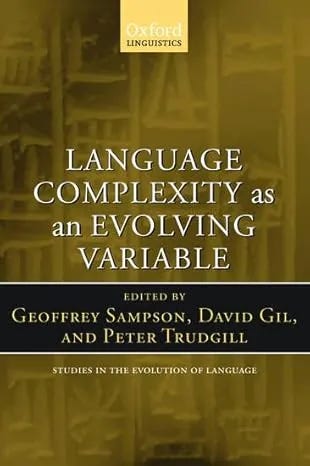
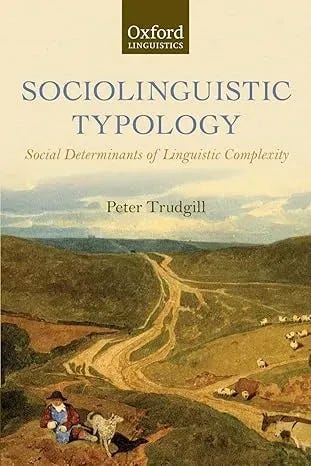
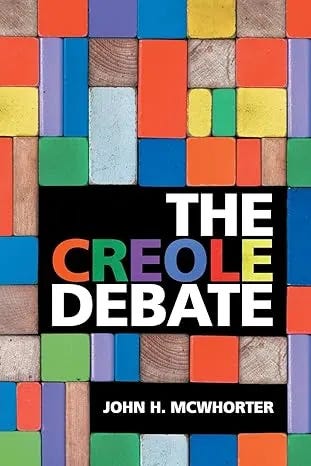
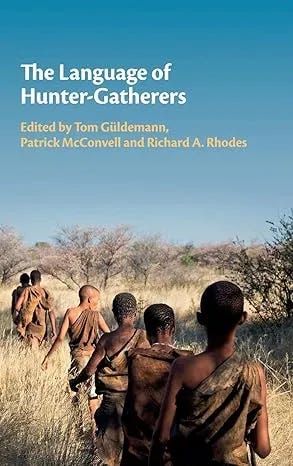
📑 References
- Aikhenvald, Alexandra Y. 2018. Language contact and areal linguistics. In How languages work: An introduction to language and linguistics, 314–335. 2nd edn. Cambridge University Press. https://doi.org/10.1017/9781108553988.014.
- Bakker, Peter, Aymeric Daval-Markussen, Mikael Parkvall & Ingo Plag. 2011. Creoles are typologically distinct from non-creoles. Journal of Pidgin and Creole Languages 26(1). 5–42. https://doi.org/10.1075/jpcl.26.1.02bak.
- DeGraff, Michel. 2005. Do Creole languages constitute an exceptional typological class? Revue française de linguistique appliquée 10(1). 11–24. https://doi.org/10.3917/rfla.101.24.
- Güldemann, Tom, Patrick McConvell & Richard A. Rhodes (eds.). 2020. The language of hunter-gatherers. Cambridge University Press.
- Lefebvre, Claire & Anne-Marie Brousseau. 2002. A grammar of Fongbe (Mouton Grammar Library 25). De Gruyter Mouton. https://doi.org/10.1515/9783110880182.
- Matthews, P. H. 2014. The concise Oxford dictionary of linguistics (Oxford Paperback Reference). 3rd edn. Oxford: Oxford University Press.
- McWhorter, John. 2019. Creoles. In Anthony P. Grant (ed.), The Oxford handbook of language contact (Oxford Handbooks in Linguistics), 282–302. Oxford University Press. https://doi.org/10.1093/oxfordhb/9780199945092.013.13.
- McWhorter, John H. 2018. The Creole debate. Cambridge University Press.
- Parkvall, Mikael. 2019. Pidgins. In Anthony P. Grant (ed.), The Oxford handbook of language contact (Oxford Handbooks in Linguistics), 261–281. Oxford University Press. https://doi.org/10.1093/oxfordhb/9780199945092.013.12.
- Romaine, Suzanne. 1988. Pidgin and creole languages (Longman Linguistics Library). Longman.
- Sampson, Geoffrey. 2009. A linguistic axiom challenged. In Geoffrey Sampson, David Gil & Peter Trudgill (eds.), Language Complexity as an Evolving Variable (Studies in the Evolution of Language 13), 1–18. Oxford University Press. https://doi.org/10.1093/oso/9780199545216.003.0001.
- Smith, Norval & Anthony P. Grant. 2019. Mixed languages, younger languages, and contact-induced linguistic change. In Anthony P. Grant (ed.), The Oxford handbook of language contact (Oxford Handbooks in Linguistics), 302–328. Oxford University Press. https://doi.org/10.1093/oxfordhb/9780199945092.013.14.
- Velupillai, Viveka. 2015. Pidgins, creoles and mixed languages: An introduction (Creole Language Library). Vol. 48. John Benjamins.
If you’d like to support Linguistic Discovery, purchasing through these links is a great way to do so! I greatly appreciate your support!
Check out my entire Amazon storefront here.



